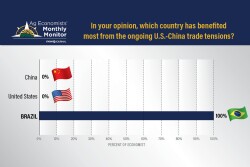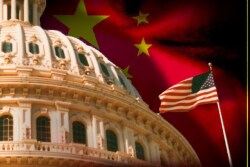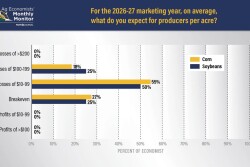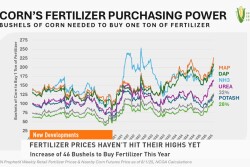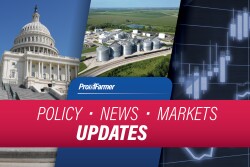Tariffs
Tariffs, also known as taxes on imported goods, are a tool used by President Donald Trump as part of his overall economic vision. As U.S. agriculture navigates tariffs and their implications on trade, commodity prices, input costs and more, ag economists and farmers remain divided on the effectiveness of tariffs and what the changes mean for the broader economy and livelihoods.
Treasury Secretary Scott Bessent says China is making progress on its commitment to buy U.S. soybeans, hitting the “correct cadence,” with purchases expected to wrap by February 2026 — underscoring ongoing trade commitments and support for farmers.
China’s pledge to buy 12 MMT of U.S. soybeans is facing questions over timing, storage capacity and price competitiveness, leaving markets uncertain whether the full promise can be met before year-end.
As fertilizer prices and demand hold firm this fall, Josh Linville with Stone X Group warns prices could climb higher if reported government aid payments arrive this year.
Strong production numbers and government policies support the thesis of higher costs for longer.
Beijing’s refusal to buy American and its pivot to Brazil could be less about economics and more to do with politics. “It’s a calculated decision about control and national leverage, not about getting the cheapest beans,” says one ag economist.
The senior senator from Iowa says the president ‘has to’ get an agreement made that will enable trade between China and the U.S. to resume.
The Farm Journal September Ag Economists’ Monthly Monitor makes it clear: Working capital is thinning, export markets are shaky and long-term crop margins could get ugly. But for now, one thing is still keeping its strength: Americans’ appetite for beef.
NCGA’s Krista Swanson says it would take about 226 bu. of corn to buy a ton of ammonium phosphate, which is up from the 180 bu. it took at the beginning of this year. As fertilizer costs are on the rise, corn prices are now at or below $4, and it’s creating a grim outlook for 2026.
As soybean exports face increasing uncertainty, the United Soybean Board says it’s focused on drumming up more domestic demand.
White House mulls farm aid as Trump escalates global tariff fight | Disaster aid | Rollins in Iowa | Trump ‘very angry’ at Vladimir Putin





